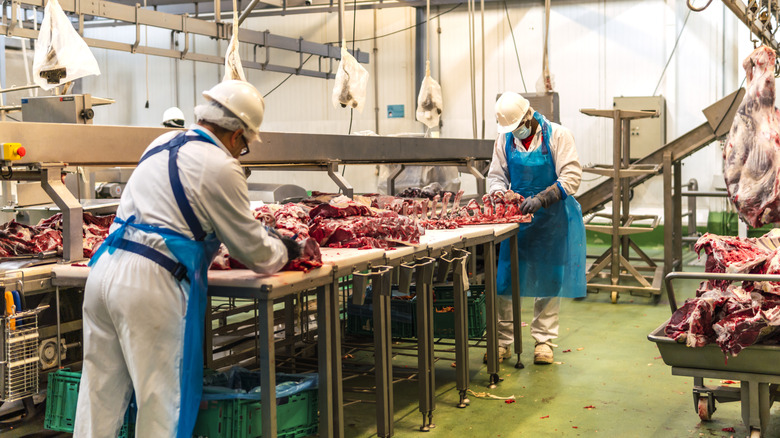What Is MSM Beef And Why Is It Banned In The US?
Mechanically separated beef is one of the meats that are now against the law in the U.S., and it used to be a big player in America's processed food scene. For decades, this paste-like product slipped into hot dogs and bologna, quietly bulking up recipes and cutting costs. That all changed after mounting health concerns pushed regulators to take it off the menu for good.
At its core, mechanically separated meat (MSM) is exactly what it sounds like: Meat blasted off bones by machine. Producers would take livestock carcasses with scraps still attached, then press them through a mesh-like screen using intense pressure. The result was a smooth, batter-style paste with traces of cartilage, bone marrow, and fibrous tissue mixed in. In its heyday, MSM from beef or pork could account for a sizeable chunk of certain processed meats, provided the label spelled it out.
In the late '80s, a USDA proposal would have let manufacturers add small amounts of it to certain foods without mentioning it on the label. It drew sharp criticism from consumer groups, which warned that bone content could be far higher than consumers realized. Industry representatives pushed back, claiming those numbers were exaggerated, but the fight over what went into the paste foreshadowed a much bigger battle ahead — one that would eventually end MSM beef's run in the U.S. entirely.
The safety scare that ended MSM beef
The debate over labeling faded fast once health risks took center stage. By the early 2000s, regulators were more concerned with what might be riding along in the paste than how it was listed on a package. If any part of a cow's spinal tissue made its way into the mix, it could carry the agent behind bovine spongiform encephalopathy (BSE), or mad cow disease — a fatal condition that attacks the brain and nervous system. That link put mechanically separated beef under a microscope, especially as BSE outbreaks overseas made global headlines.
Europe had already pulled the plug on mechanically separated beef from cattle years earlier, and the U.S. followed suit after several recalls linked to mad cow disease concerns. In 2004, federal food safety officials formally barred MSM beef from use in products meant for people, cutting it off from hot dogs, bologna, and anything else that once used it as filler. Pork and poultry versions survived the crackdown but must be clearly labeled on ingredient lists.
The move came during an era of heightened public distrust in processed beef. This waryness wasn't helped by massive industry scandals, including the largest beef recall in U.S. history in 2008, when 143 million pounds of beef were pulled from the market. While that case wasn't all about MSM beef, it cemented its reputation as a product the U.S. wasn't willing to take chances on, leaving it to fade quietly from the American food supply.

